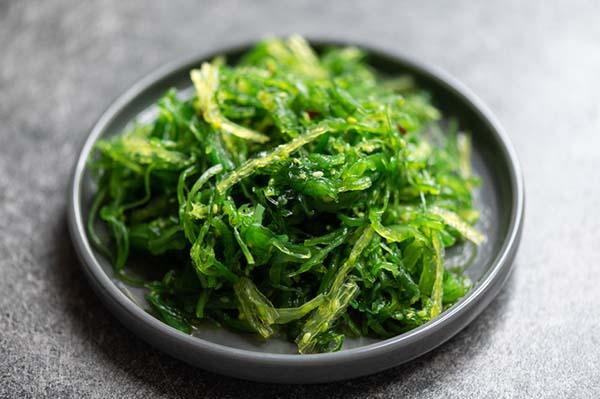Seaweed: A tasty, nutritious snack
- Reviewed by Teresa Fung, MS, RD, ScD, Contributor; Editorial Advisory Board Member, Harvard Health Publishing

Depending on your upbringing, you might know seaweed best as the wrapping of your favorite sushi roll, a nuisance best avoided at your local beach, or a standard part of your everyday diet. While people from Asian and Pacific cultures have been eating seaweed for centuries, it's seen a rise in popularity as a tasty and nutritious food option around the world. So does it live up to the hype?
What is seaweed?
Seaweed is the name given to any number of plants and algae that grow in bodies of water.
There are many different types that grow naturally all over the world. But edible seaweed is most popular in Asian cuisines.
Some of the most common types of seaweed used in food include:
- nori
- aonori
- kombu
- wakame
- dulse
- ogo
- kelp
- hijiki
- spirulina.
Seaweed's nutritional profile
The exact nutritional makeup of seaweed varies by the type you're eating. No matter the type you choose, seaweed is low in calories, fat, and sugar, and is typically a good source of minerals and plant chemicals known as phytochemicals. Nutrients that seaweed can contain include iron, magnesium, vitamin A, vitamin C, vitamin B9, iodine, vitamin K, fiber, DHA and EPA (healthy omega-3 fatty acids), potassium, and phytochemicals including polyphenols and carotenoids. Check the Nutrition Facts label to see how much of which nutrients are found in that specific product (and check the serving size to see how much you need to eat to get those amounts).
It's worth noting that some seaweed preparations are high in sodium. In addition, some types of seaweed contain high amounts of iodine, which is essential in limited quantities but can be harmful when eaten in large amounts. Seaweed can also contain the heavy metals arsenic, mercury, cadmium, and lead, which it can absorb if grown in areas contaminated with those substances.
Possible health benefits of seaweed
Some preliminary research has linked seaweed to lower risk of heart problems, anti-cancer properties, blood sugar control, and healthy thyroid function. But more high-quality human studies are needed to learn whether and the extent to which eating seaweed contributes to these benefits.
Ideas for incorporating seaweed into meals and snacks
You can find lots of different types of dried seaweed for sale online and at Asian grocery stores. Increasingly, you can buy seaweed, especially seaweed snacks (which are typically small sheets of dried nori, the type used in sushi rolls) in many mainstream supermarkets. You can enjoy these straight out of the package.
To incorporate dried seaweed into cooked foods, you can soak it in water for a few minutes, then:
- Use it to flavor broths and soups.
- Toss with sesame oil, rice wine vinegar, and cucumber or lettuce for a quick seaweed salad.
- Saut' it with garlic.
- Wrap it dry around rice and fish to make your own sushi roll.
- Add it to noodle dishes and casseroles.
- Add it to stir-fry dishes.
About the Author

Sarah Klein, Health Writer
About the Reviewer

Teresa Fung, MS, RD, ScD, Contributor; Editorial Advisory Board Member, Harvard Health Publishing
Disclaimer:
As a service to our readers, Harvard Health Publishing provides access to our library of archived content. Please note the date of last review or update on all articles.
No content on this site, regardless of date, should ever be used as a substitute for direct medical advice from your doctor or other qualified clinician.















